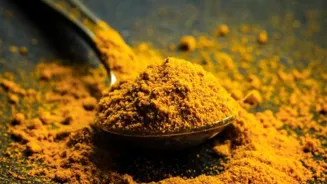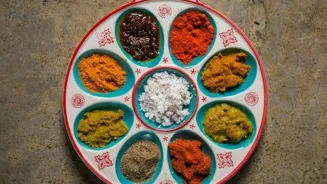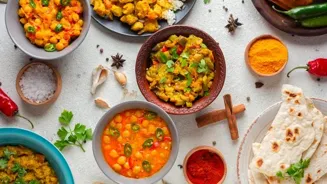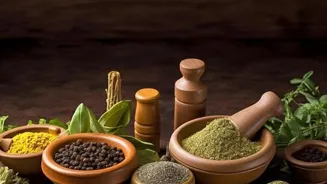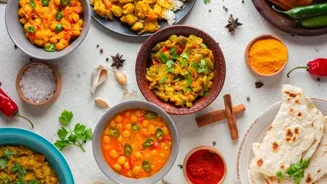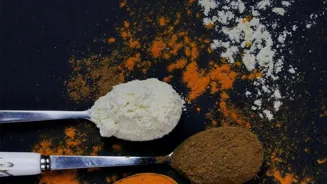Unlock the essence of Indian cuisine with 8 essential spices. Dive into the world of flavors and traditions
India, land of vibrant colors and captivating culture, is undeniably renowned for its diverse
and flavorful cuisine. The secret behind these mouthwatering dishes lies in the harmonious blend of spices, each lending its unique character to create a symphony of tastes.
These spices, more than mere ingredients, are the soul of Indian cooking, carefully passed down through generations, enriching our culinary heritage. Every Indian kitchen, regardless of location or family tradition, has a collection of essential spices that form the foundation of countless recipes.
Let's explore eight indispensable spices that no Indian kitchen should be without, unraveling their importance and uses in everyday cooking. We'll see how these humble ingredients elevate ordinary meals into extraordinary culinary experiences, making every bite an adventure for the senses.
This journey through the spice rack is a tribute to the heart of Indian cooking, its enduring legacy and its ability to create memories that last a lifetime.
Turmeric: revered spice in Indian culture for health and flavor
Turmeric, known as "haldi" in Hindi, holds a revered position in Indian culture and cuisine. Its vibrant yellow color signifies auspiciousness and good health, making it an integral part of religious ceremonies and traditional remedies.
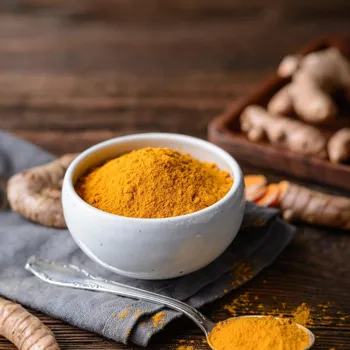
Beyond its cultural significance, turmeric boasts impressive medicinal properties, primarily due to its active compound, curcumin. Curcumin is a potent anti-inflammatory and antioxidant, known to combat various ailments and boost overall well-being.
In the kitchen, turmeric adds warmth and earthy notes to curries, dals, and vegetable dishes. It lends a beautiful golden hue to food, making it visually appealing. A pinch of turmeric is often added to milk, known as "haldi doodh," a popular remedy for colds and coughs.
Turmeric is truly a multifaceted spice, cherished for its flavor, color, and health benefits. It's a staple in every Indian household, a reminder of tradition, and a symbol of well-being. Its versatility and benefits make it an essential ingredient in every Indian cooks pantry.
Cumin: essential Indian spice for flavor & health benefits
Cumin, or "jeera" as it is commonly known, has a warm, earthy aroma that awakens the senses. These tiny seeds are a powerhouse of flavor, adding depth and complexity to a variety of Indian dishes. Cumin is available in both seed and powder form, offering flexibility in its applications.
Cumin seeds are often tempered in hot oil at the beginning of cooking, releasing their aromatic oils and infusing the dish with a rich, nutty flavor. Ground cumin, on the other hand, is typically added later in the cooking process to enhance the overall taste.
Cumin is an essential ingredient in spice blends like garam masala and adds its distinctive flavor to curries, stews, and rice dishes. Cumin also aids digestion and is known to have several health benefits.
No Indian kitchen is complete without this versatile spice, known for its ability to transform ordinary dishes into culinary delights with its warm and earthy notes. Cumin adds that extra magic.
Coriander: versatile spice in Indian cuisine, adds flavor and color to dishes
Coriander, popularly known as "dhania," is a versatile spice used in both seed and leaf form. The seeds possess a warm, citrusy flavor that adds depth to curries, gravies, and spice blends. They are often roasted and ground before use, releasing their aromatic oils and enhancing their flavor.
Coriander leaves, or cilantro, are used as a fresh garnish, adding a burst of freshness and color to dishes. They have a bright, slightly peppery taste that perfectly complements the richness of Indian cuisine.
Coriander is an integral part of Indian cooking, used in countless recipes across different regions. It's integral component of many spice blends.
Whether its used in seed or leaf form, coriander enriches the flavor and enhances the visual appeal of Indian dishes, making it a beloved spice in Indian households. It is used in everyday cooking.
Red chili powder adds spice and flavor to Indian cuisine
Red chili powder, or "lal mirch," is what brings the spice and fire to Indian food. It is made from ground dried chilies and is available in different levels of heat, allowing you to adjust the spice level of your dish to your preference.
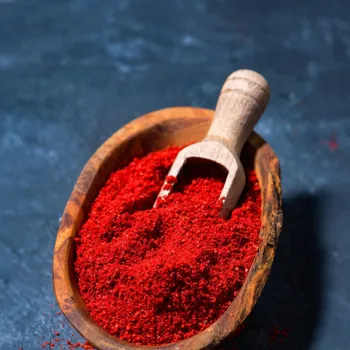
Kashmiri chili powder, for example, is known for its vibrant red color and mild heat, while other varieties can be significantly hotter. Red chili powder is used extensively in Indian cooking, adding a pungent kick to curries, dals, and vegetable dishes.
It is also a key ingredient in marinades, spice blends, and chutneys. Red Chilli powder is a must-have for any Indian kitchen and it enhances the flavor. It allows you to customize the heat and add the flavors.
Mustard seeds - small but mighty spice in Indian cuisine
Mustard seeds, or "rai," are small but mighty, adding a unique pungent flavor to Indian dishes. These tiny seeds come in black, brown, and yellow varieties, each with its own distinct taste profile.
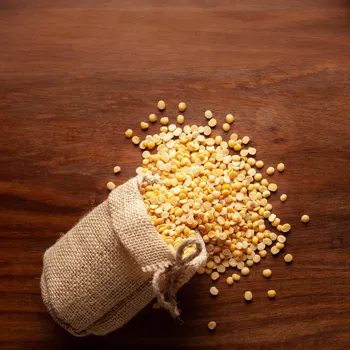
Mustard seeds are most often used by tempering them in hot oil, causing them to pop and release their characteristic flavor. This technique is used to add a zesty flavor to curries, dals, and vegetable dishes. Mustard seeds are also used in pickles, chutneys, and spice blends.
Mustard seeds are a flavorful spice and a staple in many regional Indian cuisines, primarily in South Indian cooking, known for their strong, pungent taste and the ability to add an interesting depth to the flavor. They are indispensable for cooks seeking authentic Indian tastes.
Blend of spices in Indian cuisine adds warmth and depth
Garam masala, literally translated as "warm spice mix," is not a single spice but a blend of several spices, each adding its distinct character to the mix.
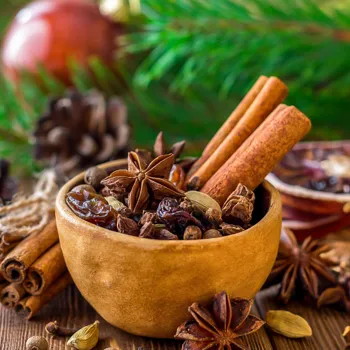
The exact composition of garam masala varies from region to region and even from family to family, but it typically includes spices like cardamom, cinnamon, cloves, cumin, coriander, black pepper, and nutmeg. Garam masala provides warmth and depth to Indian dishes.
Garam masala is typically added towards the end of the cooking process to preserve its aroma and enhance the overall flavor of the dish. It can be used. Every Indian household has their own secret garam masala that they use in their dishes.



